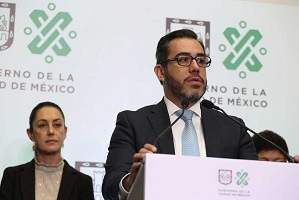Mexico City Mayor Claudia Sheinbaum and police chief Jesús Orta Martínez have announced a new security strategy that is intended to reduce emergency response times to three or four minutes. The scheme, which also calls for a significant increase in police patrols, divides the city into 847 security quadrants of approximately 10 city blocks, each of which has been cataloged as high, medium or low risk according to the number of emergencies, businesses and incidence of crime in each.
The number of officers in the streets will increase from 16,586 to 23,000, while each quadrant can count on having at least one patrol vehicle and one motorcycle. Jesús Orta said that 60% of the police command at local and regional levels has been assessed and reassigned where necessary, and that the quadrant commanders, of whom some had previously held command posts and others who were promoted, were selected based on their qualifications and experience.
The chief said that each commander will go “door to door” to introduce themselves to residents and distribute flyers with relevant security information and the boundaries of each security sector. Sheinbaum stressed the importance of cooperation between police and residents, saying that “. . . [police] presence will help to reduce insecurity.” The mayor said the strategy has already been implemented in the Cuautepec neighborhood in the borough of Gustavo A. Madero, which saw a subsequent decrease in crime. She was confident that the city’s crime rates will be brought down. She explained that during the previous administration the police force lost 6,000 personnel due to retirement and the city’s failure to increase pay and bonuses. She also told reporters that the 75 police stations constructed during the previous administration are not currently functional, and that police will be reassigned to their original sectors until the stations can be readied for use.








